
Janus Henderson: Euroland and UK - messages unchanged
Euroland monetary trends have cooled slightly, suggesting that GDP growth will moderate in the first half of 2018. UK trends have stabilised after weakness earlier in 2017, consistent with GDP growth continuing at around its recent pace.
04.12.2017 | 09:55 Uhr
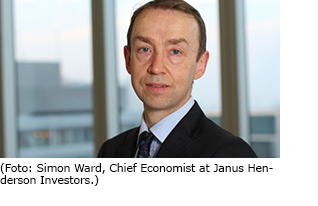 As usual, the focus here is on non-financial monetary aggregates, i.e. covering holdings of households and non-financial businesses but excluding financial sector money, which is less relevant for assessing near-term economic prospects.
As usual, the focus here is on non-financial monetary aggregates, i.e. covering holdings of households and non-financial businesses but excluding financial sector money, which is less relevant for assessing near-term economic prospects.
Six-month growth rates of Euroland non-financial M1 and non-financial M3 rebounded in October but are lower than in 2016 and the first half of 2017 – see first chart. Growth in real terms has been supported by a fall in six-month consumer price inflation but this is probably in the course of reversing – second chart.
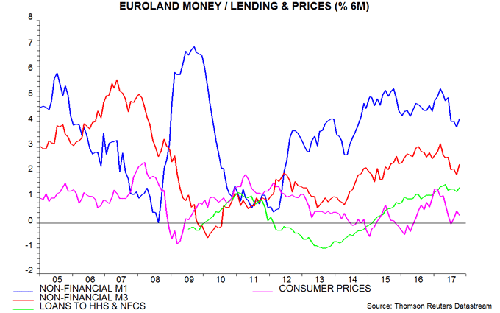
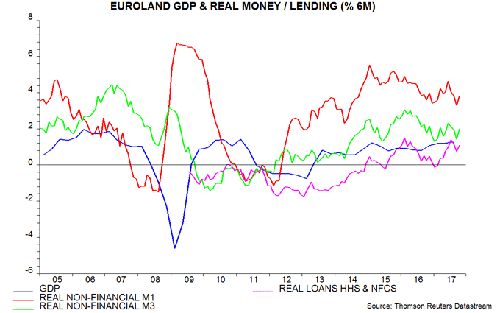
Money trends, it should be emphasised, remain consistent with solid economic growth but activity data surprises may shift from positive to balanced / negative in early 2018.
Recent positive surprises have been focused on France. French economic acceleration was signalled by a strong pick-up in real M1 deposit growth in late 2016 / early 2017 but there was a set-back in October – third chart.
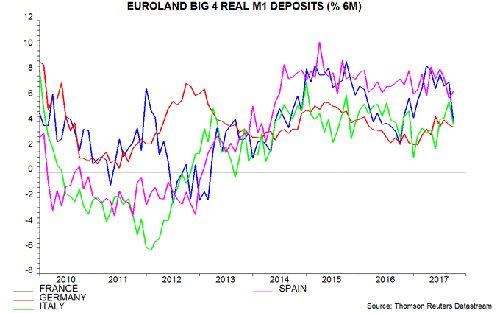
In the UK, six-month growth rates of non-financial M1 and non-financial M4 have moved sideways since the spring after falling in late 2016 / early 2017 – fourth chart. Growth in real terms has recovered slightly as six-month consumer price inflation has moderated – fifth chart.
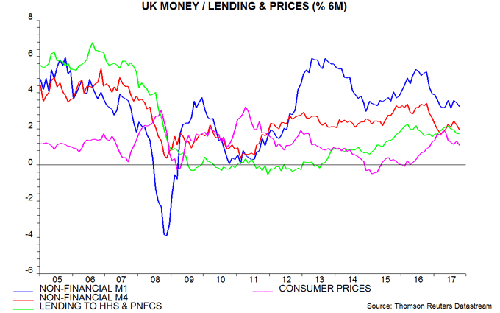
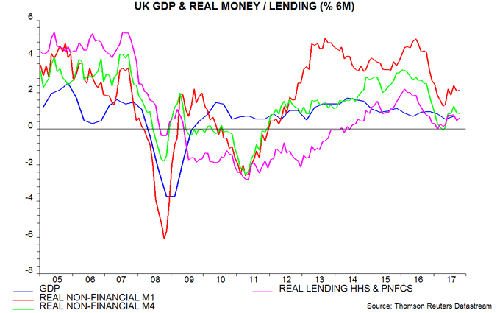
Corporate money trends are of particular interest at present: a Brexit-related cut-back in investment or shift of activity overseas would be expected to be preceded by a slowdown or contraction in real M1 holdings of private non-financial corporations (PNFCs). Such holdings are still rising moderately, while household real M1 growth has recovered slightly, suggesting consumer spending resilience – sixth chart.
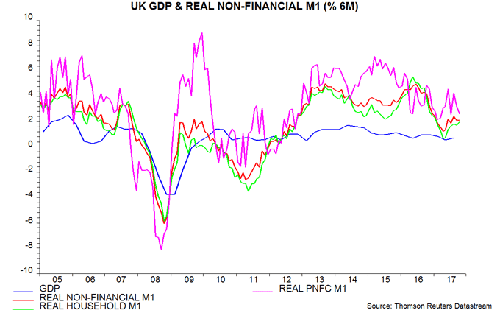
Some analysts may express alarm about a recent sharp fall in annual growth of the Bank of England’s M4ex broad money measure – from 7.3% in April to 4.2% in October. About half of this decline is attributable to a slowdown in financial sector money holdings, which is unlikely to be of economic significance. Household M4 growth, meanwhile, has been weakened by a portfolio shift out of bank and building society time deposits (including retail bonds) into investment funds and National Savings products. Retail sales of investment funds and inflows to National Savings totalled an estimated £54 billion in the 12 months to October, equivalent to 2.8% of M4ex, up from £16 billion, or 0.9%, in calendar 2016.



Diesen Beitrag teilen: